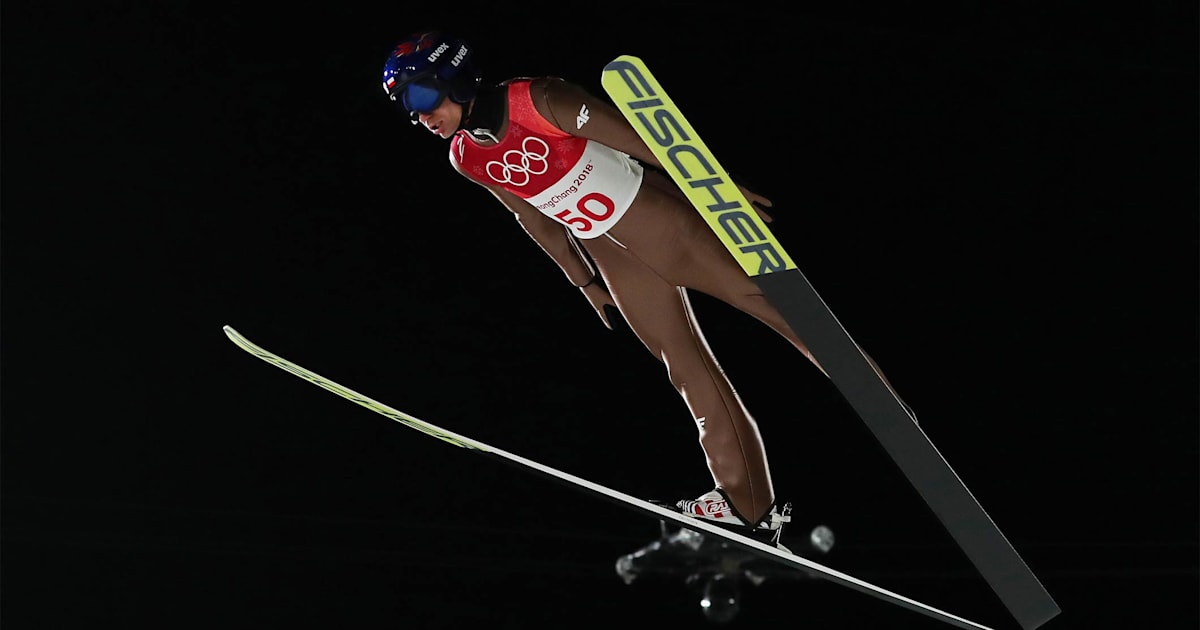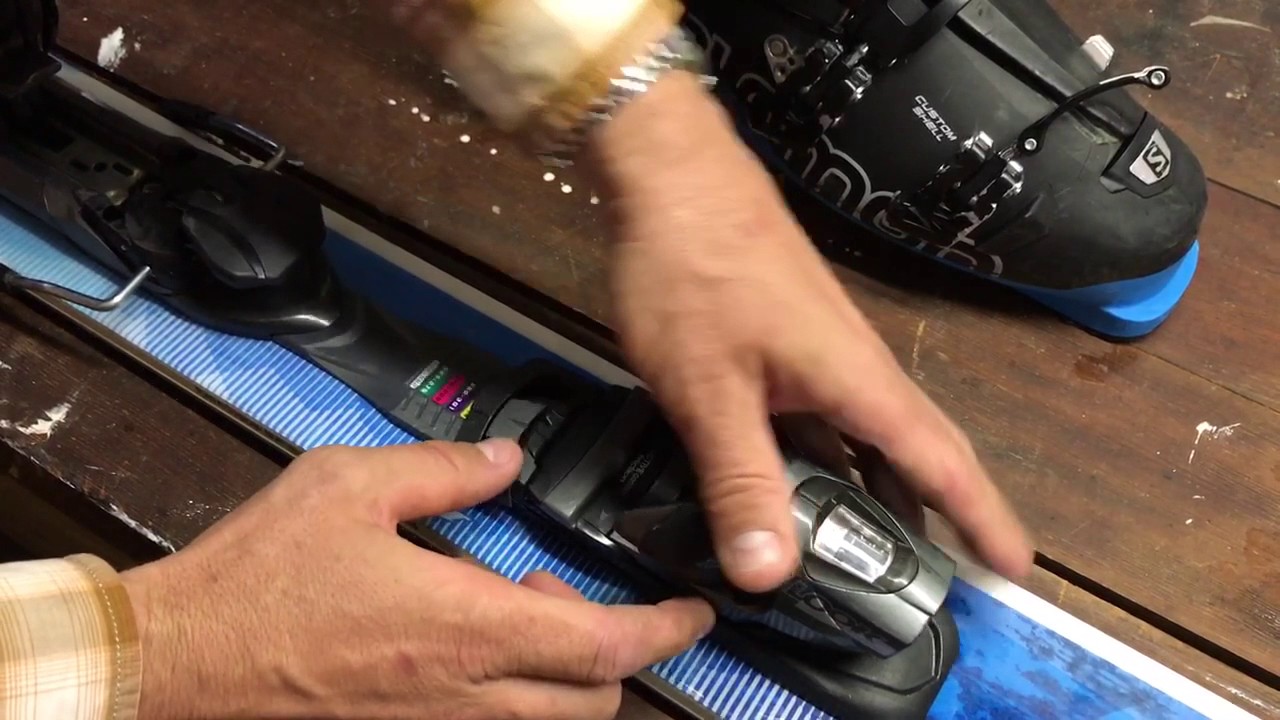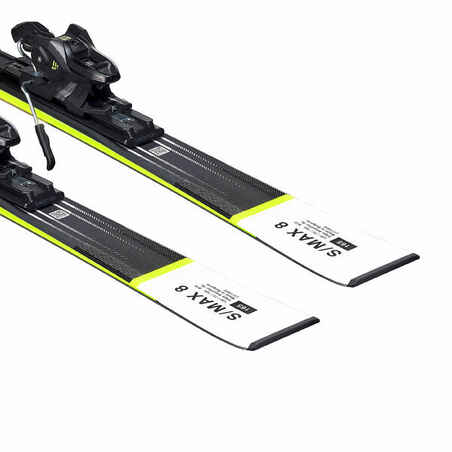
When choosing skis for kids, it's important to consider their height and weight. This allows them to choose the right length for their ability and comfort while skiing.
Another important consideration is the type and brand of ski. Some skis are designed with a cap construction that makes them lighter and more forgiving, while others have vertical sidewalls or wood cores. You can choose the type of construction that you prefer to make it easier to turn and get an edge.
Skis can either be rented or purchased from a shop. You can inspect the skis before each season to make sure they are in perfect condition. It allows you to upgrade your child as they grow.
Many skis for kids come with bindings attached. This means you don’t have to drill the bindings again when your child swaps boots. This saves you time, frustration, and makes your child feel more confident riding their new skis.

Also, consider the length and width of your child's skis. Larger skis will perform better in deep snow and are easier for children to turn on groomed tracks. Use the L9 Ski Search Tool to easily find the width that is right for you.
You can use the size chart below to help you decide what size your child should be. The size chart uses the averages for each age group, but there is a bit of wiggle room between sizes.
For example, if your child is between two sizes, you can subtract 10 centimeters or 20 centimeters from each number on the chart to determine which one will work for them.
It is a good rule of thumb to have your skis sized at chest height or below. For beginners who are just learning to ski, this is a safe and comfortable length.
For advanced skiers, who can link longer radius turns, longer skis will be more appropriate. They are faster and easier to control.

Also consider whether your child will be skiing on a park or groomed run. You should consider the length of your child's skis if they are primarily park skiers.
You should also ensure that the size you choose fits your helmet correctly. Ski helmets are often not made for children so make sure your child has the right size.
It should be snug on your child's helmet without them trying to move it or shake it. The helmet should not be too loose or they may have difficulty controlling it and experience discomfort when skiing.
It is a good idea to begin with a smaller pair of skis so your child can get used to them before making a purchase for a larger pair. There are many excellent pairs of skis for children so make sure to look at them before purchasing a larger pair.
FAQ
How can I make traveling more enjoyable?
Traveling is not about just getting from point A and B. It should not be about just getting from point A to B.
So we have created an app called "Traveler," which helps you plan your trip by creating itineraries based on your interests.
We are currently working to add more features, such as booking flights, hotels, and renting cars.
The idea behind this project was to create a simple travel planning tool for people who want to experience more while they're away.
How do you prepare your body for vacation?
To live a healthy life on vacation, you need to eat well and exercise.
Be sure to stay hydrated and well rested before you leave home.
You should ensure you have all necessary travel documents and medication ready for when you go.
And if you're planning to take any medication during your trip, ensure you carry enough to last until you return home.
Also, remember to bring extra clothes in case of illness or injury.
What should I pack for a vacation trip?
It's important to decide what you want for your holiday. Not just packing clothes. It's also important to think about where you are going, and how long you will be there.
It is important to consider what kind of activities you want to engage in. You might want to go scuba diving if your destination is exotic. If you plan on staying longer, you may want to attend local festivals.
You should let the people who are going to be caring for you know if you have any medical issues.
What snacks should I bring to the plane?
There are many choices of snacks that you can bring along when you travel. Consider bringing along any food that you are fond of while traveling.
If you are a chocolate lover, you may want to bring some chocolates along with other snacks like crisps, nuts, and biscuits.
Perhaps you want something savory? You could pack some crackers or cheese.
It is also important to consider the type of beverages you'd like to bring onboard. Maybe you prefer something hot or cool?
You can bring any type of snack or beverage, but make sure you pack them securely.
It will be easy to transport them without worrying about them being damaged.
How long does it take for you to fly between countries?
The distance between two airports and the weather conditions affect the time taken to fly.
It takes approximately 3 hours to fly.
The actual flying time will depend on several factors including the airline, the aircraft type and delays at the airport as well as weather conditions.
Which countries are known for their best food?
The food available in each country is different. So it's hard to say which countries have the best food.
However, we can tell which countries have the best food!
TripAdvisor users have ranked the following countries as their top three.
-
Italy - Italy has been voted number 1 by TripAdvisor users for its amazing food.
-
France - France was second due to its rich culture.
-
Spain – Spain came third due to its wonderful weather and beautiful beaches.
How much luggage do I need?
The length of your trip determines how much luggage you should take. If you are traveling by plane, you only need hand baggage, usually less than 20kg. However, if you are taking a train or bus, then you will need more space.
You will receive a form with all the details about your flight when you arrive at airport. This form will contain information about your flight, such as the weight and assistance required when you check them in.
Always check your luggage before you leave the house. If you don’t check it, you might end up waiting hours for everyone else to do so.
It is best to travel light because you never know what might happen. You won't be able to use your bag if it gets lost.
Statistics
- According to Maori legends, this park holds 14 fjords that were all carved by a giant stonemason with an adze. (busytourist.com)
- No Checked Bags: No Alcoholic beverages with more than 70% alcohol (over 140 proof), including grain alcohol and 151 proof rum. (tsa.gov)
- They're also likely to offer babysitting services, in case you'd like to have dinner one night after 7 p.m. (travelandleisure.com)
- Case in point: the private island of Ilha Caldeira, less than seven miles off the coast as part of the Primeiras and Segundas Archipelago, is located within the marine-protected area with 20 percent of the country's intact living coral. (travelandleisure.com)
- That's an 18% jump from 2019, the previous record year. (travelandleisure.com)
External Links
How To
How to plan for your next vacation
Booking flights, hotels, car rental, and activities are just a few of the many aspects involved in planning a trip. It also includes important considerations such as budget, schedule, destination, weather forecast, etc.
These are important points to remember when planning your next vacation.
We have put together a step-by–step guide to help plan your next vacation. This guide was compiled based upon customer feedback and experience. We hope that by following this guide, you can plan your next vacation without any hassle.
Steps:
-
Your Budget is an important step in planning your trip. Before you begin planning for your trip, you need to know how much money it is you are willing and able to spend. If you don’t have enough money, it might be necessary to cancel your trip.
-
Book Your Tickets - Once you've decided on your budget and set your priorities, booking your flight tickets is the first thing that you should do. You should ensure that you get the best deal possible at the lowest price. Check to see if there are any seasonal specials offered by airlines. These deals can save you lots of money.
-
Pick Your Destination. Once you've booked your tickets, the next step is to decide where to travel. When choosing your destination, many factors are important. These include location (where you are going), climate (what time of year), culture (how friendly the people) and cost (how much it is).
-
Locate Accommodations – After you've chosen your destination, you need to locate accommodations. There are many choices for accommodation. You can choose from affordable hostels or luxury suites. Choosing the right type of accommodation depends on your needs and preferences. If you are looking for somewhere close to the center of the city, a hotel might not be the best option. On the other hand, if you prefer quiet places away from crowds, a homestay may suit your requirements better.
-
Select Activities and Attractions - Now is the time for you to choose the attractions and activities that you want to include in your itinerary. Depending on the length of your stay, you can either choose only a few activities or add several new ones throughout your trip.
-
Determine your schedule - After you've chosen the attractions and activities that you would like to include in your itinerary, it's now time to create it. Sticking to a plan will help you maximize the value of your trip. It's okay to be flexible and enjoy your vacation more.
-
Create Itinerary - Creating an itinerary includes all the information about your trip. These information can include flights, accommodations, activities and restaurants. You will need to record them all and make a list.
-
Research Online – Before you go on your trip, make sure to research online. Find out what other travelers have to say about different destinations by reading reviews and testimonials. This way, you will be able to plan accordingly.
-
Don't Overpack - This is one of the most common mistakes people make when packing. Avoid bringing more than three sets of clothes. Bring clothing appropriate for the weather you're visiting.
-
Always be prepared Be prepared before you set off on your trip. It's not a good idea to spend time looking for documents while you are still on the move.